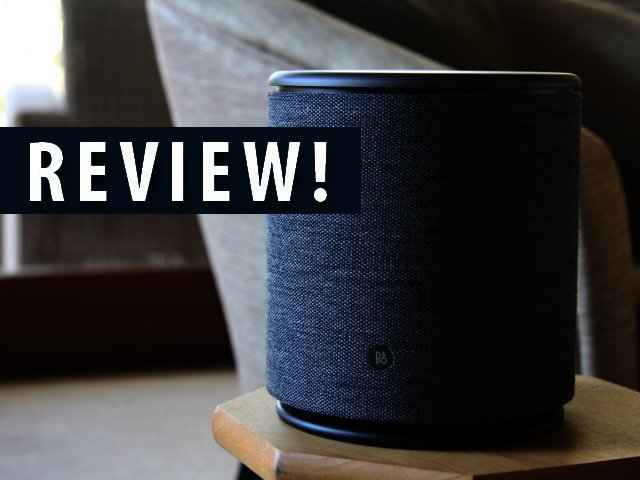Over the past two years, I've been impressed by the headphones and smaller speakers that Danish audio hardware specialists Bang & Olufsen has served up, with design, sound quality and price tags all notable talking points. Continuing with the company's Beoplay range, I'm looking at the M5 multiroom speaker, which is designed to envelop any open space with sound.
Bass down low
One of the bigger offerings in the Beoplay speaker range, the M5 is not for those with a passing interest in audio equipment, or indeed small coffers, given its fairly hefty R11 599 price tag. Matching the RRP is the sound it produces, or rather the strength of the bass. Housing four speakers in total, which comprises of one subwoofer, one midrange and two tweeters, the M5 can deliver quite the wallop when it comes to sound.
Virtually everything I played on it came out far more bassy than expected, which is nice for parties, but is less ideal for listening to podcasts or audiobooks. Consequently, although the M5 is a multi room speaker, it's less suited for playing differing types of audio content.
Heavy hitter
Shifting back to design, the Beoplay M5 looks fairly decent given its relatively large cylindrical dimensions at 165 mm wide. It also tips the scales at a bracing 2.54 kg, which means it's not the best choice when it comes to portability. Aiming to aid in that respect is Bang & Olufsen's Beolink Multiroom technology, allowing you to pair multiple Beoplay devices around various rooms in your house for playback. That said, the feature does necessitate you having a few more Beoplay branded speakers, making it very ecosystem dependant.
While the M5 might be mistaken for simply being a cylindrical speaker that belts out sound, there are a few nuanced touches here too. The circular top of the Beoplay M5 also doubles as a control mechanism for the speaker for example.
Subtle touches
Capable of rotating clockwise and anti-clockwise, a twist of the top in either direction will either increase or decrease volume once pairing via Bluetooth (4.0) has taken place. Long presses down on the top also turns the Beoplay M5 on and off, with shorter presses pausing and resuming playback. These are nice features to have available when in arm's reach to the M5, but more often than not you're going to control the speaker from your device of choice or the Beoplay app.
Added to the wireless functionality is support for Apple Airplay, Spotify Connect, Deezer, Chromecast (built-in) and of course the Beoplay app. There's also a 3.5 mm headphone jack, an ethernet port and power slot to take care of the connections. The latter was a little disappointing, as there is only a run of the mill power cord that measures roughly 1.5 metres long. Given our history with larger Beoplay speakers, I was hoping for a bit more of an elegant power supply solution, especially given the M5's price.
Final verdict
As an all-round room speaker, the Beoplay M5 excels in many areas, but falls short in a handful. The good aspects are its solid design and easy setup, but these are negated by the bass heavy sound it produces.
Yes, it is indeed very loud and it delivers deep, bellowing bassy notes, but after a while it can become too hard to handle, especially if you want to listen to something other than the latest NOW mix. Factoring in its R11 599 asking price, I expected a far more balanced and nuanced performance when it comes to sound. If your heart is set on larger a speaker in the Beoplay range, I'd lean towards the Beolit 17 (a little under R10k) instead.





